You don’t have to worry anymore! This article will address all your confusion at once and make it easier for you to set up your game. Now, let’s dive in!
The most common chip color denominations for home use
In a Texas Hold'em home game, what denomination is each color chip? The answer is...
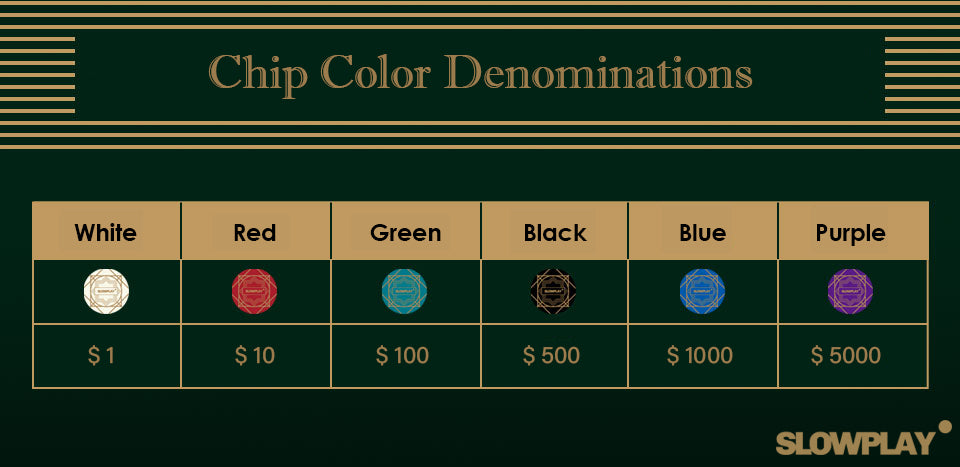
This is the distribution method that everyone is more accustomed to. But of course, you can change it slightly according to your own game type and level. Next, I will explain how to optimize your family bureau to the greatest extent and surprise everyone with your professionalism.

If it is a regular game, it is relatively simple to set up the buy-in. The face value of the chips often matches with the same amount of money. Additionally, there is no need to specially design the prize pool. This is also the most common form of game among poker enthusiasts, because there is no need to worry about a tournament timer or raising blinds.
How do I set up the poker chip value?
If you have your own poker chip set, I suggest you follow the previous chip color matching distribution.
White represents $1, red represents $5, blue represents $10, and green represents $25. Such a chip distribution is completely sufficient to support all blind levels below $2/$5 in your game.
However, if you want to simulate a high stakes game such as $5/$10 or $10/$20, you will need to use black or purple chips. If your chip set does not contain black and purple, you can switch white to represent $100 and red to $500.
How many chips do I need?
Generally speaking, it is reasonable for each player to have about 50 chips to start with.
A standard chip set usually contains about 300 chips, which come with 4 color variations: 100 pieces for white, 50 pieces for each of the other colors. This type of set is basically enough for 5-6 players to play comfortably.
However, if there are more than 6 players, it would be better for you to buy a 500-piece poker set.
How do I divide the chips? How much should the buy-in be?
In this type of game, players can bring in as much as they want. But usually the host needs to specify a minimum and maximum amount of buy-in. The common set-up is 20bb for the minimum and 100bb for the maximum.
The following chart shows the common chip distribution for each buy-in amount:
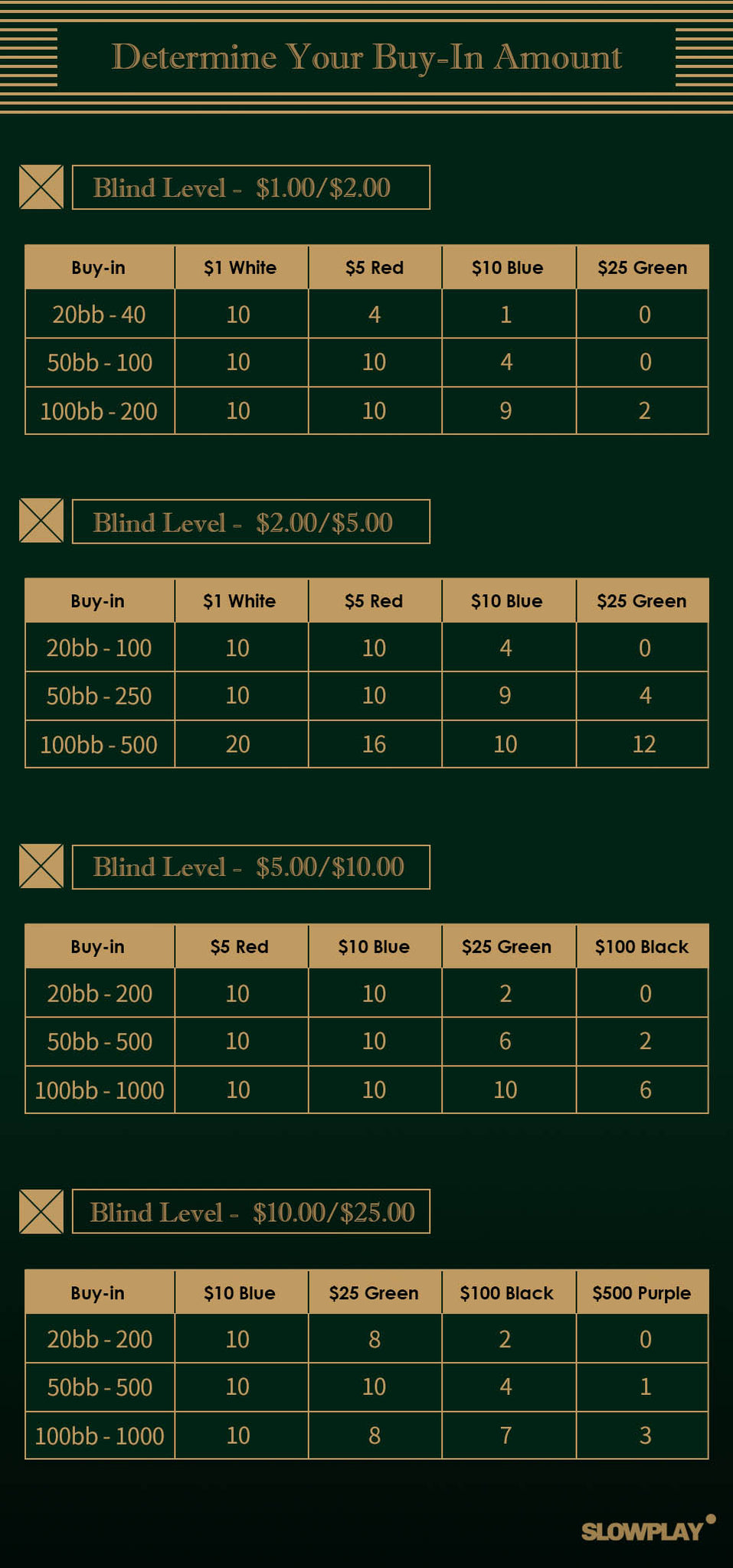

One of the benefits of playing home tournaments is that everyone will lose at most one ticket. It is not as easy to lose control as a regular poker game, but it can still bring tension to the table. The winner can also receive relatively generous rewards.
As the host for a home tournament, the set-up is slightly more complicated than regular poker game. You’ll need to:
- Set up and plan the prizes
- Assign and continuously raise the blind levels
- As the game progresses, you might have to change the denomination of chips
Chip Value in Home Tournament
If you want to set up the game with 5-6 blind levels, then you would need at least four colors of chips. Now most chip sets provide at least four colors of red, white, green and black.
Here is a simple and flexible chip distribution plan, which is good for up to 30 players:
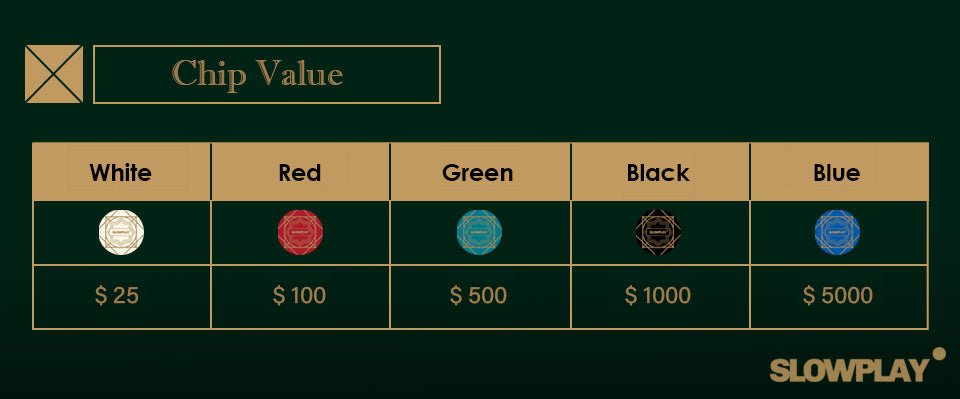
When the game progresses to the point where you need $5,000 or $10,000 chips, you can color up the chips, which is the exchanging of lower denomination chips for higher denomination chips. For example, take back the $25 chips and switch them to higher denominations accordingly. Or, you have spare chips of the fifth color, usually black or pink, just assign them to be $5000 or $10,000 for use.
How many chips do I need?
In home tournaments, each player needs fewer chips, but the value of each chip is higher. Even so, the most common set of 300 chips is sufficient for a small group of 6 players. However, if you have up to 9 participants, then you will need at least a 500-chip set.
What if the set I bought contains only three colors of chips?
Generally speaking, if you only have three colors of chips, it is not recommended to host a home tournament, unless it is a heads-up game.
This situation can very easily turn chaotic. On the other hand, frequent changes in the face value of the chips will greatly affect your game experience. Our recommendation is to add on more color to your table.
How do I divide the chips?
For most home tournaments, the easier way to divide the chips is to let each player start with $3000 face value of chips. You could distribute the chips this way:
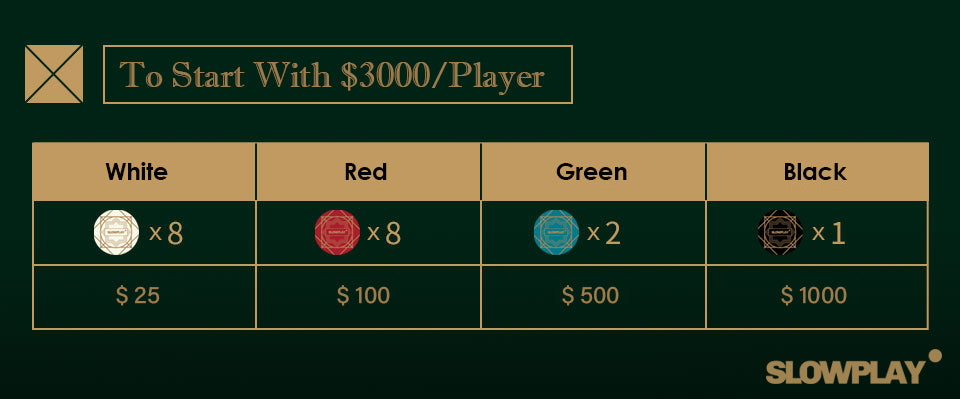
In this situation, each player will have 60 big blinds to start with. It has a great balance between what each player can play with and how long the entire game runs.
What if my friends want to play a deep stacked game?
If you have adequate chips on hand and want to play a deeper stack, I suggest setting the starting chip amount to $10,000 and distribution the chips according to the following ratio: 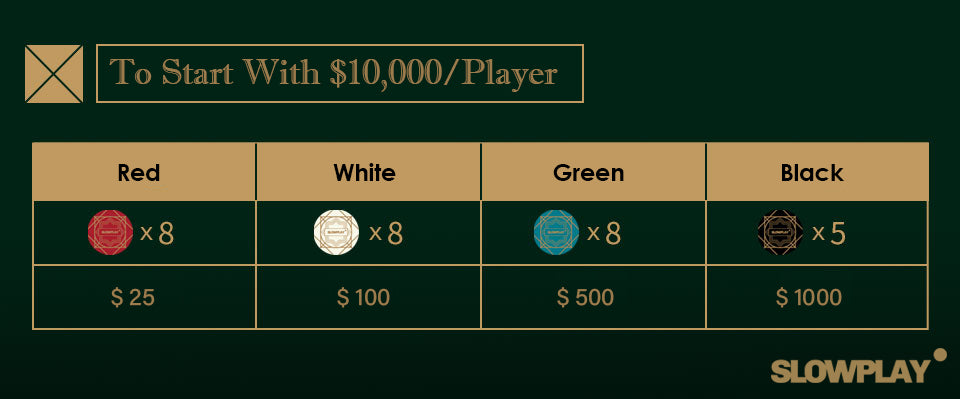
How do I set up the progression of blinds?
Based on the chip distribution suggestions above, you can plan the blind levels as follows:
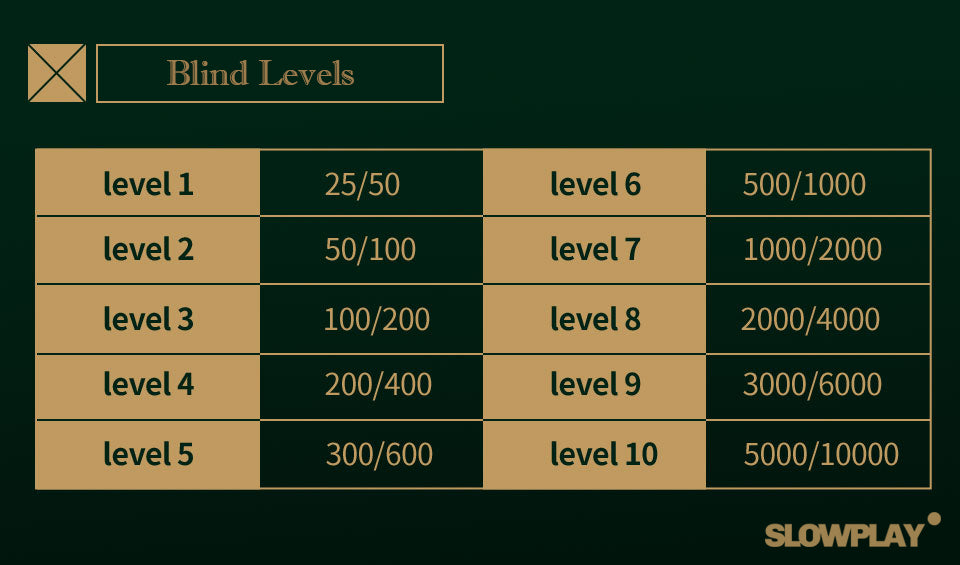
Tips: If you want to play a deep stacked game but don't have too many chips on hand, just use the standard $3000 starting chips distribution, and control the game time for each level to be a little longer. The general rhythm is 15-20 minutes for each level. In this situation, you can extend it to 30-45 minutes each.
How fast should the blinds increase?
For most home games, each blind level should not exceed 20 minutes. 15 minutes is the most reasonable length. According to this time setting, even if there is only one table, the entire tournament could run for several hours.
If you want to host a quick game, then set each level to last 10 minutes. In offline games, you can't do much in 5 minutes. Basically, you can only play one or two hands.
As the game progresses, how do I color up the chips?
Refer to the table below. It demonstrates how to exchange small denomination chips for larger denominations to re-invest in the game as the blind level increases:
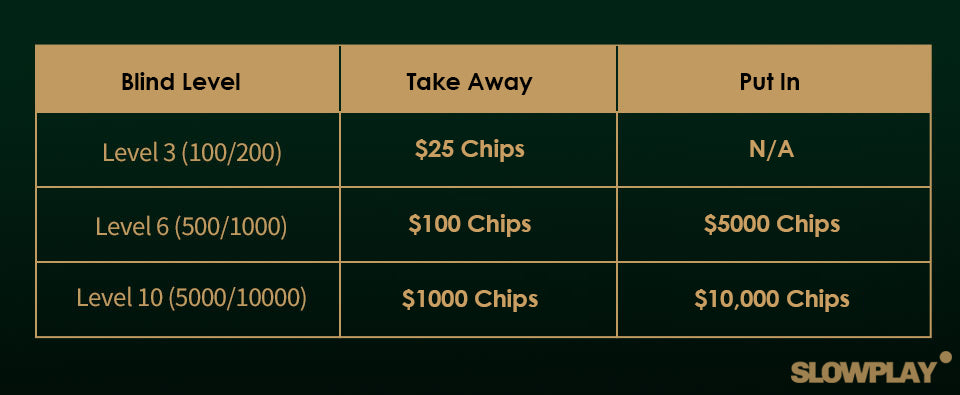
How to set up a reasonable prize pool?
For friendly and happy home tournaments, I suggest spreading out the wealth as it is shown below. In this way, 1/3 of the participants can receive some rewards. Here is how you can set up the prize pool:


What does “shortstack” mean?
Short stack generally means that in a poker game, the total number of chips held by a player is fewer than 40 big blinds. When a player holds 50-100 big blinds, we generally think that he is a mid-stack player. When a player holds more than 100 big blinds, he is a deep stack player.
What shape of poker table is more suitable for playing at home?
It depends on how many people are playing. At the same time, consider the overall layout and décor of your place. A safe plan is to buy a poker mat, which is more flexible.
At this point, you have all the information you need to host a poker game at home. Leave us a comment and tell us about your home game experience. We would love to hear about it!
If you want to learn more about how to improve your poker skills, check out our other blog posts. In addition, don’t forget to prep your home game with professional Texas Hold’em equipment. They will definitely improve your gaming experience and surprise your player friends. Enjoy and win big!




2 comments
Hi Lana, thank you for leaving a comment for us. To answer your questions:
1. Was it a cash game or tounament?
2.If cash, and the wining player’s stack covers the other 2 players then yes, winner takes all. If not, There will be side pots between other 2 players.
3.If it’s a tournament, then it all depend on how the initial agreement on how the prize pool is devided. If the rule was that “winner takes all”, then yes.
Hi there, can you answer me a question. If you start a game of texas holdem with 7 players and there are 4 knocked out due to no chips left. With the 3 that is left and all 3 goes all in an one person wins all the chips from the other 2 players does that person win all the money in the pot.